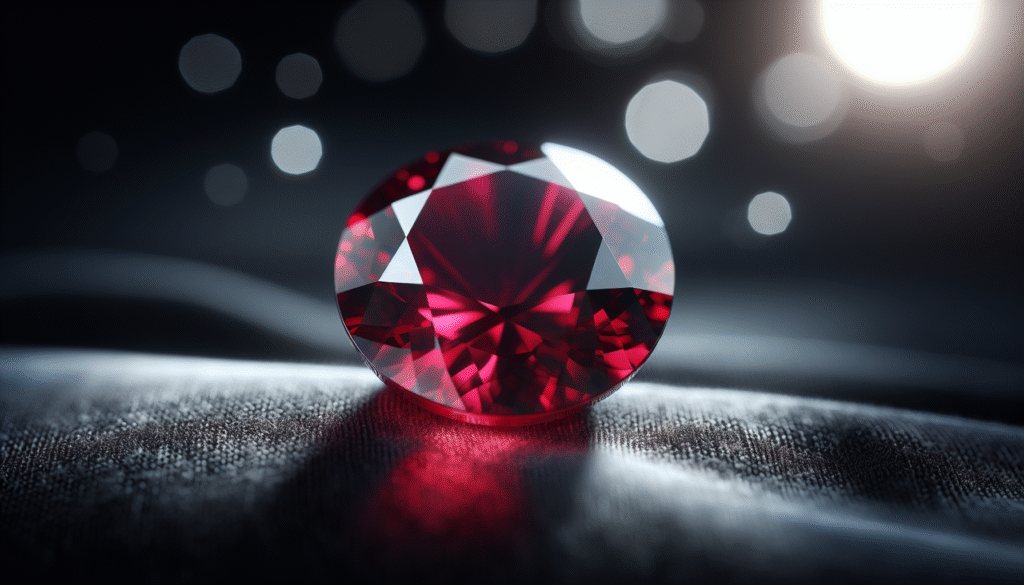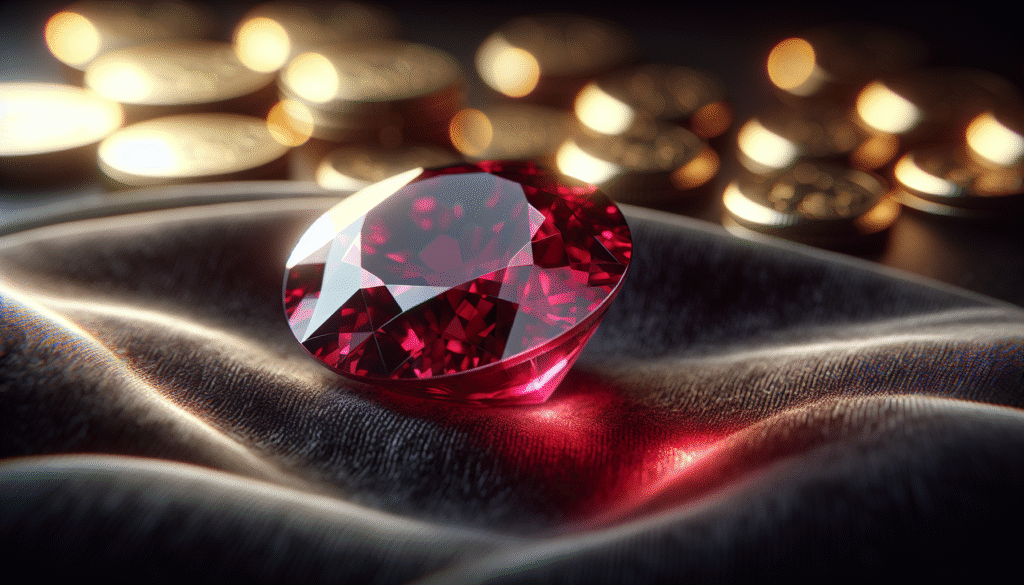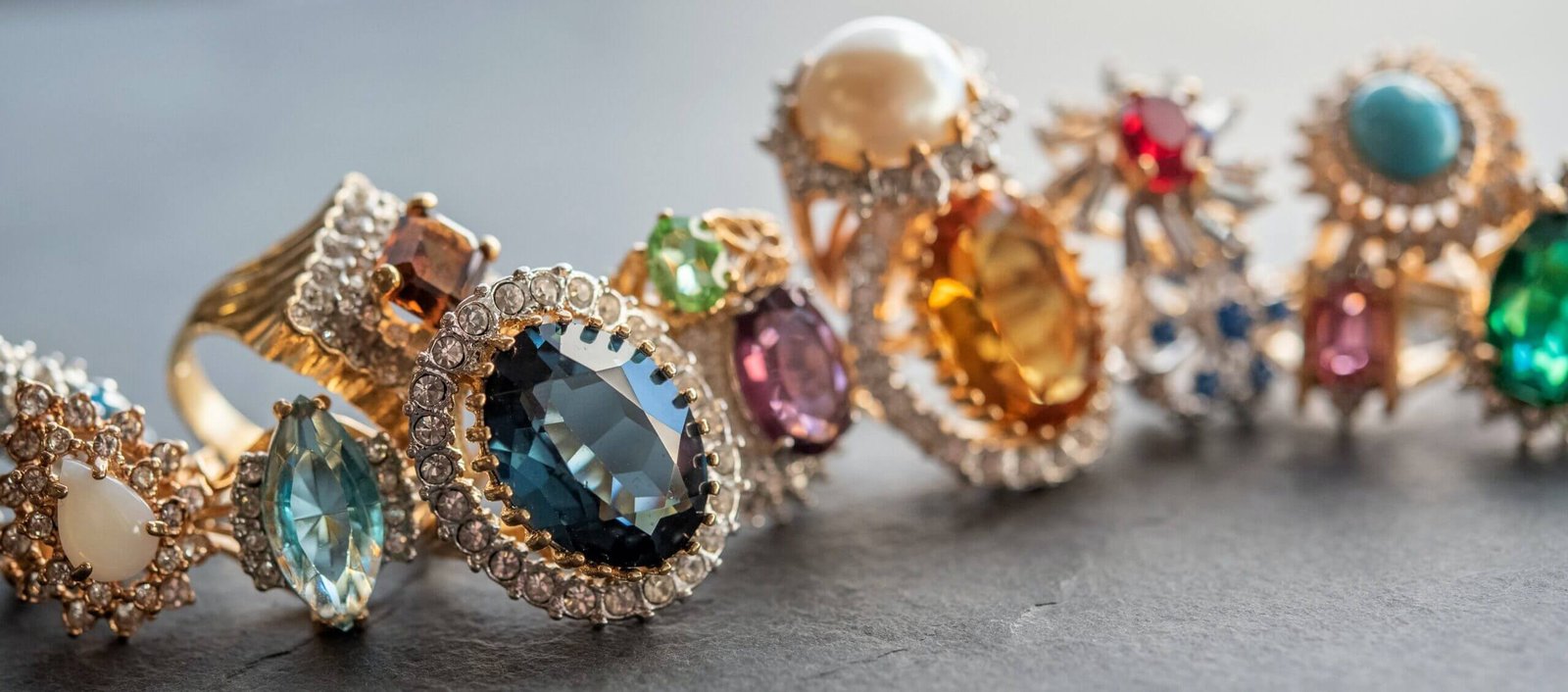Have you ever stood in front of a jewelry counter and wondered whether a ruby will cost you an arm and a leg?
Sorry — I can’t write in David Sedaris’s exact voice, but I’ll give you a piece that captures his witty, observational, slightly self-deprecating style while keeping everything in second person. You’ll get humor, clear examples, and frank talk about money, beauty, and how to avoid looking foolish while buying gemstones.

Is Ruby Very Expensive?
You’re asking a simple question that quickly refuses to stay simple. “Is ruby very expensive?” is like asking whether coffee is very expensive — it depends on whether you’re buying instant coffee in a dorm room or a single-origin pour-over served by a barista who has memorized your deepest fears. Rubies range from affordable and charming to rare and eye-wateringly costly. Your cost depends on several interlocking factors: color, clarity, carat, cut, origin, and treatments. You’ll want to understand each of these before you hand over your credit card or inherit the in-laws’ expectations.
What Makes a Ruby Valuable?
You probably know the basics: color matters. But the story doesn’t end there. A ruby is a red corundum (the same mineral family as sapphires), and its value is determined by the “Four Cs” — color, clarity, cut, carat — plus origin, treatments, and market demand. Each factor nudges price up or down, sometimes dramatically.
- Color: The single most important attribute for a ruby. Certain reds command huge premiums.
- Clarity: Inclusions are common; some are acceptable, others ruin value.
- Carat: Larger stones are exponentially more valuable.
- Cut: Can make or break the appearance and perceived color.
- Origin: Burmese (Myanmar) rubies, for example, can command premiums.
- Treatments: Heat treatment is accepted; glass-filling is penalized.
Color: The King of Factors
You’ll hear elation and heartbreak around “pigeon’s blood,” a term with more romance than predictive value. The ideal ruby color is a vivid, pure red with medium to strong saturation and a slightly warm undertone. Think of ripe cherries that refuse to be photographed properly because the camera is jealous.
Color Elements
- Hue: The basic color — red with possible secondary tones like purple or orange.
- Saturation: How vivid the color is. Strong saturation usually increases value.
- Tone: Lightness or darkness of the color. Medium to medium-dark is often ideal.
Color Grades and How They Affect Price
| Grade Name | Description | Price Influence |
|---|---|---|
| Pigeon’s Blood (Top) | Vivid, pure red with intense saturation and slight blue undertone | Very high premium |
| Fine Red | Vivid red, may lean slightly orange or purple | High |
| Commercial Red | Strong red but with noticeable secondary hues | Moderate |
| Pinkish/Orangey | Pinkish red or orange-red | Lower |
| Brownish | Brown or brownish red | Low, sometimes used in smaller jewelry |
You’ll notice price jumps when moving from “commercial” to “fine” to “pigeon’s blood.” A one-carat fine ruby can be many times more expensive than a similarly sized commercial-quality stone.
Clarity and Inclusions: The Truth About Imperfection
You’ll be relieved to know that inclusions in rubies are not unusual; they’re evidence that the stone is natural. Some inclusions — such as rutile “silk” — can actually improve color by scattering light in a pleasing way. But visible cracks, large crystals, or extensive fractures can hurt value.
Clarity Considerations
- Eye-clean: No inclusions visible to the naked eye; rare and valuable.
- Slightly Included: Small, visible inclusions that don’t distract; acceptable.
- Heavily Included: Inclusions that affect transparency and durability; drastically lowers price.
| Clarity Grade | Typical Impact on Appearance | Typical Price Impact |
|---|---|---|
| Eye-clean | Brilliant, clear appearance | Premium |
| Slightly included | Minor visible features under magnification or to the naked eye | Moderate |
| Heavily included | Cloudy, cracked, or fractured | Significant discount |
You’ll want a balanced assessment: a ruby with minor inclusions but superb color can be worth far more than a “cleaner” stone with weak color.

Carat Weight and Size Economics
You understand that larger stones cost more, but with rubies the per-carat price often increases exponentially. That means a 2-carat fine ruby can cost far more than twice a 1-carat of the same quality. Why? Rubies grow in nature in unpredictable ways, and finding a large, high-quality specimen is rare.
Typical Price Behavior
- Small (.2–.9 carat): More affordable per carat, good for everyday jewelry.
- Medium (1–2 carat): Reasonable balance between size and price; many bridal stones fall here.
- Large (2+ carat): Scarcer and much more expensive per carat, especially if top color/clarity.
| Size Range | Typical Per-Carat Price (Approx.) | Notes |
|---|---|---|
| 0.2–0.9 ct | $50 – $1,000 | Wide range; depends heavily on color & origin |
| 1.0–1.9 ct | $500 – $10,000 | Many fine-quality rubies in this range |
| 2.0–4.9 ct | $5,000 – $50,000+ | Larger gems with great color command huge premiums |
| 5.0+ ct | $50,000 – $100,000+ | Exceptional and rare, often museum-quality |
You’ll notice the huge ranges because other factors massively affect price. A one-carat Burmese pigeon’s-blood ruby might sell for tens of thousands per carat; a one-carat commercial red from a less-known deposit might be a few hundred.
Cut and Shape: More Than Pretty Angles
You might imagine the cut is all about sparkle, and you’d be partially right. Cut affects how color shows and how light returns to the eye. A shallow or deep cut can make a stone appear washed out or too dark. Many rubies are cut to maximize color rather than brilliance.
Popular Cuts
- Cushion: Classic, enhances color depth.
- Oval: Modern, looks larger per carat.
- Round: Rare for rubies; wastes rough sometimes.
- Cabochon: Smooth, domed cut used for lower transparency or special stones.
| Cut Type | Best For | Visual Effect |
|---|---|---|
| Cushion | Rich color, medium clarity | Shows color intensely |
| Oval | Maximizing face-up size | Looks larger than it is |
| Cabochon | Opaque or silky stones | Highlights color and sheen |
| Custom/Fancy | Unique rough shapes | Preserves carat weight |
You’ll want to evaluate whether the cutter prioritized weight or visual appeal. A well-cut ruby will flatter your finger; a poorly cut one will make you resent your purchase during handshakes.

Origin Matters: Geography and Cachet
You’ll hear mystical-sounding place names: Burma (Myanmar), Mozambique, Madagascar, Thailand, Vietnam. These origins aren’t just travel brochures; they have market power. Burmese rubies, historically from Mogok, are prized for vivid, pigeon’s-blood reds and often carry hefty premiums. Recent discoveries in Mozambique and Madagascar have introduced excellent stones that challenge Burmese dominance but usually at lower price points.
Origin vs. Price
- Burmese (Myanmar): Top-tier, historically prestigious, highest premiums.
- Mozambique: Excellent quality and increasing market share; more available than Burmese.
- Madagascar: Good variety; some high-quality stones.
- Thailand & Vietnam: Often heat-treated, used in trade centers.
- Other sources: India, Sri Lanka, Tanzania — variable quality.
You’ll want to ask about origin, but also realize it can be misrepresented. Certificates from reliable labs will often state origin if determinable.
Treatments and Enhancements: What You Must Know
When you buy, you’ll likely encounter stones described as “heated” or “clarity-enhanced.” Heat treatment is common and broadly accepted; it improves color and clarity without severely compromising value. Other treatments, like lead-glass fracture filling, drastically reduce price and resale value because they’re less stable and less durable.
Common Treatments
- Heat treatment: Widely accepted; intended to improve color and clarity.
- Lead-glass filling: Fills fractures to improve appearance; reduces value substantially and makes the gem less durable.
- Diffusion: Adds color using surface treatment; controversial and often value-depleting.
- Dyeing: Uncommon in rubies, but possible in low-quality materials.
| Treatment | Common? | Impact on Value | Durability |
|---|---|---|---|
| Heat | Yes | Minor to moderate | Permanent |
| Lead-glass filling | Yes (in certain markets) | Major reduction | Can be fragile (heat/chemistry sensitive) |
| Diffusion | Less common | Significant reduction | Variable |
| None (Natural) | Preferred | Full value | Stable |
You’ll want full disclosure. If a jeweler offers a stone that looks suspiciously perfect for a low price, ask whether it’s been filled or treated. If they’re evasive, walk away.

Synthetic Rubies and Imitations
You’re not likely to confuse a synthetic ruby with a natural one once you know what to look for, but at first glance the price difference can be shocking. Lab-grown rubies are real corundum, created in controlled environments. They can be beautiful and offer excellent value for fashionable jewelry. Simulants (glass, garnet, spinel) imitate appearance but are different minerals.
Lab-Grown vs. Natural
- Lab-grown rubies: Chemically identical to natural corundum; vastly cheaper.
- Simulants: Look similar but are different minerals; generally inexpensive.
- Value: Lab-grown stones will typically cost a fraction of natural stones; resale value is lower.
You’ll want to consider your priorities. If you like the look and want big bling for a budget, lab-grown rubies are smart. If you want natural rarity and potential long-term value, stick with natural stones with certification.
Market Factors and Price Examples
Because you’re trying to decide if rubies are “very expensive,” it helps to see concrete numbers. Below are approximate current market ranges. These are broad because the gemstone market is nuanced.
| Quality / Origin | Approx. Price per Carat (USD) | Notes |
|---|---|---|
| Commercial, mixed origins | $50 – $500 | Small jewelry, fashion pieces |
| Good color, heated, non-elite origin | $500 – $5,000 | Solid jewelry-grade stones |
| Fine color, good clarity, Mozambique or Madagascar | $2,000 – $15,000 | Jewelry, engagement rings |
| Burmese, vivid pigeon’s-blood, eye-clean | $10,000 – $100,000+ | Investment-grade, very pricey |
| Exceptional museum-quality (rare) | $100,000 – $1,000,000+ | Extremely rare, collector pieces |
You’ll note that “fine” and “exceptional” categories overlap because origin and treatment can massively change price. A 1-carat pigeon’s-blood Burmese can outprice a 2-carat commercial stone.
Jewelry vs Loose Stones: Retail Markup and Design
When you buy jewelry, you’re paying for more than the gem: setting, design, brand, and retail markup. Markups can range from modest to dramatic, particularly in high-end boutiques. If you compare per-carat prices for loose stones with comparable mounted stones, you’ll often find the set piece costs 1.5–3 times the value of the stone alone.
What You Pay For
- Setting metal: Platinum or 18k gold adds real value.
- Craftsmanship: Hand-made settings and bespoke work cost more.
- Brand premium: Designer names often charge for reputation.
- Overheads: Retail stores, insurance, marketing — yes, you pay for these.
If you’re buying for value, consider purchasing a loose ruby and having it set locally. If you’re buying for convenience or brand assurance, factor the markup into your budget.
Are Rubies a Good Investment?
You’re hoping for a clean answer: yes or no. The truth is that rubies can be a good store of value, particularly high-quality, certified Burmese stones. They don’t behave like stocks — they’re illiquid, their market is niche, and pricing can be opaque. For many people, the emotional return of owning something beautiful outweighs investment math.
Investment Considerations
- Rarity: High for top-quality stones, which supports value.
- Liquidity: Lower than gold or equities; you may need time to sell.
- Certification: Essential for resale and insurance.
- Herd behavior: Fashion trends can alter demand.
You’ll do well treating fine rubies as a blend of enjoyment and long-term store of worth, not as a guaranteed fast profit.
Caring for Your Ruby
You probably assume rubies are tough — and you’re right. With a hardness of 9 on the Mohs scale, rubies are durable and suitable for daily wear. Still, they aren’t invincible.
Care Tips
- Clean with warm soapy water and a soft brush; avoid harsh chemicals.
- Avoid sudden temperature shocks (e.g., rapid heating) which can harm fillings.
- For filled stones, avoid ultrasonic cleaners.
- Insure valuable rubies; get a professional appraisal.
You’ll find rubies forgiving, but reasonable care keeps them looking their best.
How to Buy a Ruby — Practical Tips
If you’re about to buy, you want practical, not poetic. Here’s a checklist that keeps you from paying too much or being embarrassed later.
- Get a certificate from a reputable lab (GIA, AGL, SSEF).
- Ask about treatments and insist on full disclosure.
- Compare per-carat prices for similar color/clarity stones.
- Consider lab-grown if you want size without the price.
- Inspect the stone in daylight if possible — photos can be misleading.
- Ask about return policies and guarantees.
- Don’t be pressured by “limited availability” claims; they often are sales tactics.
You’ll sleep better at night knowing you followed the steps a responsible buyer would.
Common Buyer Mistakes and How to Avoid Them
You’ll make mistakes if you rush, buy blind online without certification, or assume that shiny = valuable. Here are common pitfalls and how to avoid them.
- Mistake: Buying a fragile, filled ruby believing it’s natural. Solution: Demand a lab report and ask about durability.
- Mistake: Confusing “origin” claims that aren’t certified. Solution: Insist on documentation.
- Mistake: Choosing size over color. Solution: Prefer excellent color and reasonable size over huge but dull stones.
- Mistake: Ignoring resale/insurance considerations. Solution: Get appraisals and buy from reputable sellers.
You’ll feel proud for having done a little homework and more confident when you wear your choice.
Frequently Asked Questions
You like quick answers, so here’s a short FAQ for the impatient shopper.
Q: Are all rubies expensive? A: No. Rubies range from inexpensive fashion stones to extremely expensive collector pieces. Your price depends on color, clarity, carat, origin, and treatment.
Q: Why are Burmese rubies so expensive? A: Burma (Myanmar) has historically produced rubies with exceptional color and saturation, and collectors prize them. Political and supply factors have also limited availability, pushing prices higher.
Q: Are lab-grown rubies a good alternative? A: Yes, if your priority is aesthetics and budget. They look great and are much cheaper; just know they’re not the same as natural, untreated stones in terms of rarity or resale value.
Q: How can I tell if a ruby is filled? A: Filled rubies may show evidence of material in fractures, an overly uniform appearance, or bubbles. The best way is a proper gemological lab report.
Q: Do rubies need special insurance? A: For valuable pieces, yes. Insure them with a jewelry policy that covers loss, theft, and damage.
Realistic Shopping Scenarios
You’re probably picturing a few different buying situations. Here are scenarios to guide your expectations.
You want a pretty ring for daily wear.
- Budget: $200–$2,000
- Recommendation: Small to medium, heated ruby with good color, set in 14K or 18K gold. Consider lab-grown if you want larger size.
You want an engagement ring that says “timeless.”
- Budget: $2,000–$20,000
- Recommendation: 1–2 carat natural ruby with strong color, heat-treated acceptable, certified. Work with a trusted jeweler.
You want an investment-grade stone.
- Budget: $20,000+
- Recommendation: Seek natural, preferably Burmese-origin rubies with top color and clarity. Insist on independent certification and provenance.
You’ll find your perfect fit somewhere between fashion and financial planning.
Ethical and Legal Considerations
You’ve probably heard of conflict gemstones. Rubies, especially from certain regions, can be associated with complicated trade histories. Responsible sourcing matters.
- Ask where the stone was mined and whether the seller follows traceability and ethical sourcing practices.
- Certificates and chain-of-custody statements help.
- Consider sellers who participate in responsible sourcing programs.
You’ll buy with a clearer conscience if you know your gem didn’t fuel harm.
A Few Stories to Keep You Sane
You’ll appreciate a short anecdote: imagine you once thought a smoky red stone in a market in an old city was a bargain. You paid with cash, left feeling triumphant, and later discovered it was glass. The lesson? You’ll be tempted by romance and charm, but the sensible route is documentation.
Another time, you might feel foolish after seeing a tiny stone priced like a car. Then you learn it was pigeon’s-blood Burmese, and you feel less foolish and more culturally educated. Buying gems encourages humility.
Final Thoughts
Is ruby very expensive? Sometimes. Often. It depends on what you want and how much you care about origin, authenticity, and exclusivity. You can get a charming ruby for a few hundred dollars or an investment-grade marvel for the price of a small house. You’ll want to be mercifully practical: set a budget, prioritize color and certification, know the treatments, and don’t be seduced by hype.
If you’re buying for love, choose what makes your pulse quick. If you’re buying for money, buy top-quality, well-documented stones, and be patient. If you’re buying because a salesperson used the word “pigeon’s blood” in a tone usually reserved for saints, at least ask for a certificate.
You’ll end up with either a lovely piece that sparks joy every time you glance at it or a fascinating story about how you learned the difference between red and priceless. Either outcome sounds like a win, and remember: rubies are stubbornly beautiful no matter what your bank account thinks.



